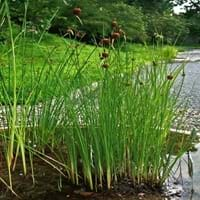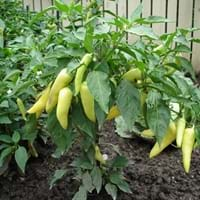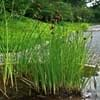Life Span
Perennial
Annual
Origin
Eastern Europe, Western Asia
Mexico, Central America, South America
Types
Common Cattail, Southern Cattail, Dwarf Bulrush
Sweet Banana Pepper, Banana Bill Hybrid Pepper, Hot Banana Pepper, Inferno Hot Banana Hybrid Pepper
Habitat
Lake margins, Ponds, Swamps
Warmer regions
USDA Hardiness Zone
3-11
9-11
Sunset Zone
21,22
A1, A2, A3, H1, H2, 1a, 1b, 2a, 2b, 3a, 3b, 4, 5, 6, 7, 8, 9, 10, 11, 12, 13, 14, 15, 16, 17, 18, 19, 20, 21, 22, 23, 24
Habit
Upright/Erect
Upright/Erect
Flower Color
Yellow, Green, Brown, Chocolate
White, Ivory
Flower Color Modifier
Not Available
Bicolor
Fruit Color
Light brown, Light Red
Light Yellow, Lemon yellow, Yellow green
Leaf Color in Spring
Green, Dark Green
Green, Light Green
Leaf Color in Summer
Green, Dark Green
Dark Green
Leaf Color in Fall
Green, Dark Green
Dark Green, Black
Leaf Color in Winter
Brown
Green
Leaf Shape
Long linear and narrow
Ovate
Plant Season
Summer, Fall, Winter
Spring, Summer, Fall
Sunlight
Full Sun, Partial Sun
Full Sun
Type of Soil
Clay, Loam, Sand
Loam
The pH of Soil
Acidic, Neutral
Acidic, Neutral
Soil Drainage
Poorly Drained
Well drained
Bloom Time
Summer, Late Summer, Early Fall
Spring, Summer, Fall, Indeterminate
Tolerances
Wet Site
Drought
Where to Plant?
Container, In Water
Container, Ground, Pot
How to Plant?
Runners
Seedlings, Stem Planting
Plant Maintenance
Low
Medium
Watering Requirements
Plant grows in water
Over-head watering
In Summer
Aquatic Plant
Lots of watering
In Spring
Aquatic Plant
Moderate
In Winter
Aquatic Plant
Average Water
Soil pH
Acidic, Neutral
Acidic, Neutral
Soil Type
Clay, Loam, Sand
Loam
Soil Drainage Capacity
Poorly Drained
Well drained
Sun Exposure
Full Sun, Partial Sun
Full Sun
Pruning
Prune in early spring, Remove damaged leaves, Remove dead branches, Remove dead leaves
Prune after harvesting, Prune in late winter, Prune lower leaves
Fertilizers
Nitrogen, Phosphate
All-Purpose Liquid Fertilizer
Pests and Diseases
Red blotch
Red blotch
Plant Tolerance
Drought
Drought
Flowers
Showy
Insignificant
Flower Petal Number
Single
Single
Foliage Texture
Medium
Medium
Foliage Sheen
Matte
Glossy
Attracts
Birds, Flying insects
Bees
Allergy
no allergic reactions
breathing problems, inflammation in lips, Runny nose, sneezing
Aesthetic Uses
Beautification, Showy Purposes, Water gardening
Not Used For Aesthetic Purpose
Beauty Benefits
Not Available
Not Available
Environmental Uses
Food for animals, Food for birds, Food for insects, Nesting sites for birds
Air purification
Medicinal Uses
Nutrients
Digestive disorders, Heart problems, High blood pressure, Inflammation
Part of Plant Used
Leaves
Fruits
Other Uses
Decoration Purposes, Showy Purposes, Used as Ornamental plant
Not Available
Used As Indoor Plant
Yes
No
Used As Outdoor Plant
Yes
Yes
Garden Design
Bog Garden, Container, Water Gardens
Container, Edible, Herb / Vegetable, Tropical
Botanical Name
TYPHA minima
CAPSICUM annuum 'Park's Sweet Banana Whopper'
Common Name
Dwarf Cattail
Banana Pepper, Park's Sweet Banana Whopper Pepper
In Hindi
बौना कैटेल
केले मिर्च
In German
Dwarf Rohrkolben
Banana Pfeffer
In French
Cattail nain
Banana Pepper
In Spanish
Espadaña enano
banano Pimienta
In Greek
Νάνος Cattail
Πιπεριά Μπανάνα
In Portuguese
Tifa Dwarf
Banana pimenta
In Polish
Dwarf Ożypałka
Banana Pepper
In Latin
Pumilio Cattail
Musa sapientum fixa Pepper
Phylum
Tracheophyta
Not Available
Class
Liliopsida
Not Available
Family
Typhaceae
Solanaceae
Clade
Angiosperms, Commelinids, Monocots
Not Applicable
Tribe
Not Available
Not Available
Subfamily
Not Available
Not Available
Number of Species
Not Available
Not Available
Season and Care of Dwarf Cattail and Banana Pepper
Season and care of Dwarf Cattail and Banana Pepper is important to know. While considering everything about Dwarf Cattail and Banana Pepper Care, growing season is an essential factor. Dwarf Cattail season is Summer, Fall and Winter and Banana Pepper season is Summer, Fall and Winter. The type of soil for Dwarf Cattail is Clay, Loam, Sand and for Banana Pepper is Loam while the PH of soil for Dwarf Cattail is Acidic, Neutral and for Banana Pepper is Acidic, Neutral.
Dwarf Cattail and Banana Pepper Physical Information
Dwarf Cattail and Banana Pepper physical information is very important for comparison. Dwarf Cattail height is 30.50 cm and width 45.70 cm whereas Banana Pepper height is 55.90 cm and width 45.70 cm. The color specification of Dwarf Cattail and Banana Pepper are as follows:
Dwarf Cattail flower color: Yellow, Green, Brown and Chocolate
Dwarf Cattail leaf color: Green and Dark Green
Banana Pepper flower color: White and Ivory
- Banana Pepper leaf color: Green, Light Green
Care of Dwarf Cattail and Banana Pepper
Care of Dwarf Cattail and Banana Pepper include pruning, fertilizers, watering etc. Dwarf Cattail pruning is done Prune in early spring, Remove damaged leaves, Remove dead branches and Remove dead leaves and Banana Pepper pruning is done Prune after harvesting, Prune in late winter and Prune lower leaves. In summer Dwarf Cattail needs Aquatic Plant and in winter, it needs Aquatic Plant. Whereas, in summer Banana Pepper needs Lots of watering and in winter, it needs Average Water.





